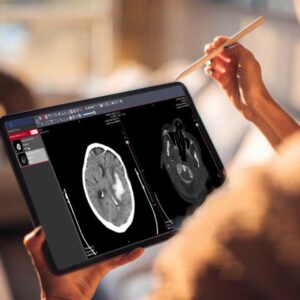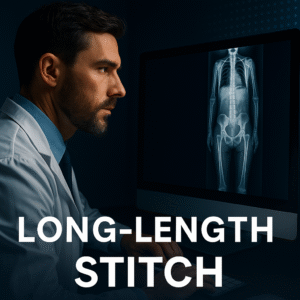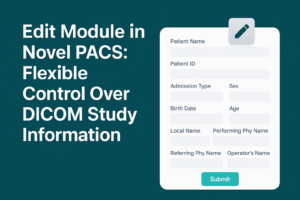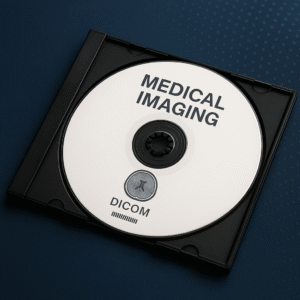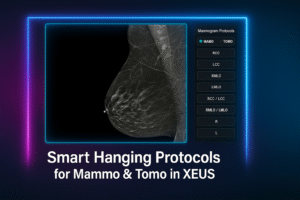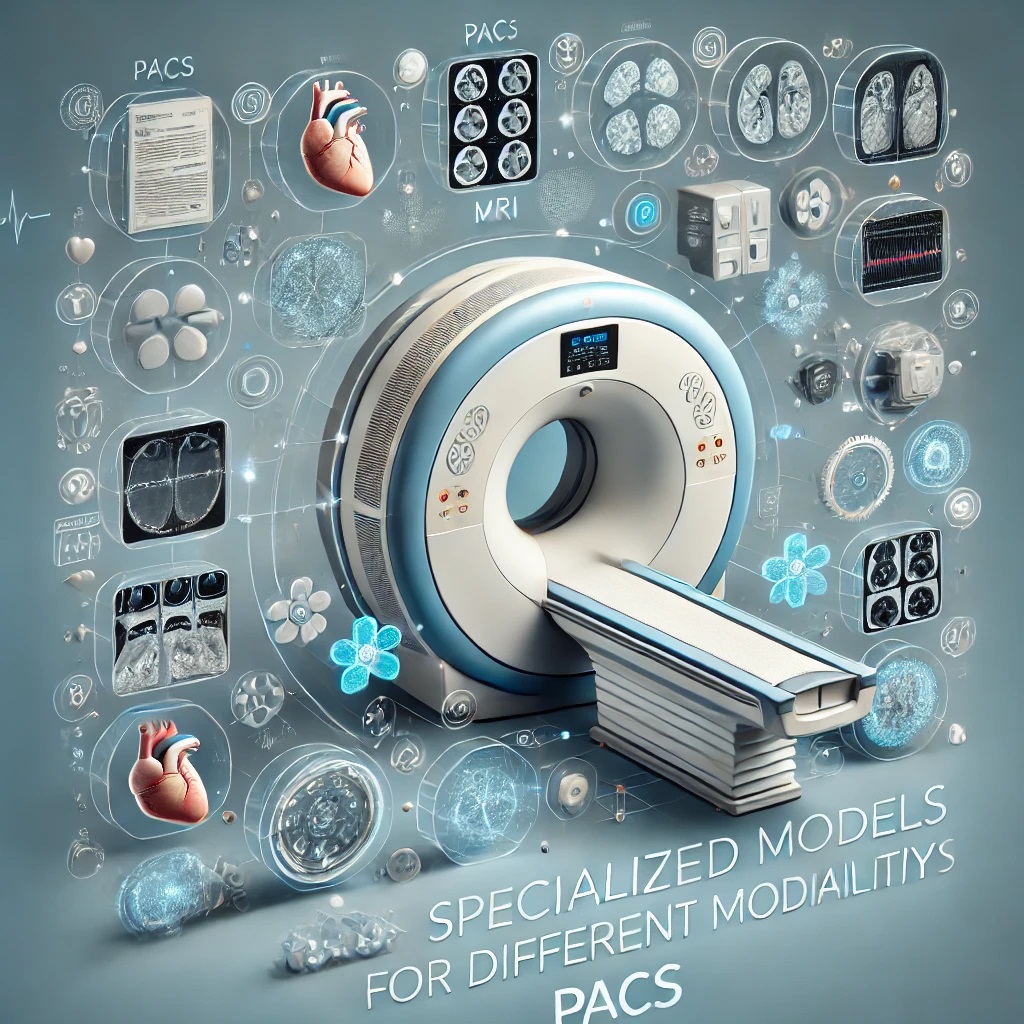The evolution of Picture Archiving and Communication Systems (PACS) has transformed the way medical images are stored, retrieved, and analyzed. While general PACS solutions are widely used across healthcare institutions, there is a growing demand for specialized PACS systems tailored to the unique requirements of specific medical modalities. These specialized systems cater to the nuanced needs of different medical specialties, offering enhanced features and workflows that align with the specific demands of various imaging technologies.
In this blog post, we will explore the different types of specialized PACS systems available, their unique features, and why they are essential for specific medical fields. We will also highlight some of the leading systems in the global market, setting the stage for future posts that will delve deeper into each of these specialized PACS solutions.
1. Radiology PACS
Overview: Radiology PACS is the most common and widely used type of PACS, designed to handle the needs of general diagnostic imaging. It supports a wide range of imaging modalities, including X-ray, MRI, CT, and ultrasound.
Key Features:
- Comprehensive Image Management: Radiology PACS offers robust image management capabilities, including storage, retrieval, and sharing of images across different modalities.
- Advanced Visualization Tools: These systems often include advanced tools for 3D reconstruction, multi-planar reconstruction (MPR), and volumetric analysis.
- Integration with RIS: Radiology PACS is typically integrated with Radiology Information Systems (RIS) to streamline workflows and ensure accurate patient data management.
Use Cases: Radiology PACS is essential in general hospitals and imaging centers where a variety of imaging modalities are used. It serves as the backbone of imaging departments, ensuring that images are easily accessible and properly managed.
2. Cardiology PACS (CPACS)
Overview: Cardiology PACS, also known as CPACS, is designed specifically for cardiology departments. It supports the unique imaging requirements of cardiovascular imaging modalities such as echocardiography, cardiac CT, and cardiac MRI.
Key Features:
- Cardiac-Specific Tools: CPACS includes tools for analyzing cardiac function, such as ejection fraction calculation, wall motion analysis, and coronary artery visualization.
- Integration with ECG Data: These systems often integrate with electrocardiogram (ECG) data, allowing for a comprehensive view of the patient’s cardiac health.
- Advanced Reporting: CPACS systems provide specialized reporting tools that allow cardiologists to generate detailed reports with cardiac-specific measurements and observations.
Use Cases: CPACS is critical in cardiology departments where detailed analysis of the heart and vascular system is required. It is commonly used in hospitals with dedicated cardiac care units and in specialized cardiology clinics.
3. Mammography PACS
Overview: Mammography PACS is tailored to meet the needs of breast imaging specialists. It is designed to handle the high-resolution images generated by mammography and tomosynthesis (3D mammography) systems.
Key Features:
- Breast-Specific Hanging Protocols: These PACS systems offer customizable hanging protocols tailored to breast imaging, allowing for efficient comparison of current and prior mammograms.
- High-Resolution Image Display: Mammography PACS supports high-resolution displays necessary for detecting microcalcifications and other subtle changes in breast tissue.
- CAD Integration: Many mammography PACS systems integrate with computer-aided detection (CAD) software, which assists radiologists in identifying potential areas of concern.
Use Cases: Mammography PACS is used in breast imaging centers and hospitals with dedicated mammography units. It plays a vital role in breast cancer screening and diagnosis.
4. Orthopedic PACS
Overview: Orthopedic PACS is designed for orthopedic imaging, supporting modalities such as X-ray, CT, and MRI. These systems are tailored to the specific needs of orthopedic surgeons and specialists.
Key Features:
- Measurement Tools: Orthopedic PACS includes specialized tools for measuring angles, distances, and alignment, which are crucial for pre-surgical planning and post-operative assessment.
- 3D Reconstruction: Advanced 3D reconstruction tools allow for detailed visualization of bone structures, aiding in surgical planning.
- Long-Leg and Full-Spine Imaging: These systems support long-leg and full-spine imaging, which are essential for assessing alignment and planning orthopedic procedures.
Use Cases: Orthopedic PACS is used in orthopedic departments and specialized clinics where musculoskeletal imaging is a primary focus. It is particularly important for surgical planning and follow-up assessments.
5. Oncology PACS
Overview: Oncology PACS is specialized for the needs of cancer treatment centers. It integrates imaging data from various modalities, including PET, CT, MRI, and radiotherapy planning systems.
Key Features:
- Tumor Tracking: Oncology PACS offers tools for tracking tumor size and progression over time, which is critical for monitoring treatment response.
- Integration with Treatment Planning: These systems often integrate with radiotherapy planning software, allowing for seamless transition from diagnosis to treatment.
- Structured Reporting: Oncology PACS supports structured reporting with templates designed for documenting oncology-specific findings and treatment plans.
Use Cases: Oncology PACS is essential in cancer treatment centers, where precise imaging and detailed tracking of tumor progression are required. It is also used in hospitals with dedicated oncology departments.
6. RT PACS (Radiotherapy PACS)
Overview: RT PACS is designed specifically for radiotherapy departments, integrating imaging with treatment planning and delivery systems. This PACS type is essential for ensuring that radiotherapy is precisely targeted to treat cancerous tissues while minimizing damage to healthy tissues.
Key Features:
- Integration with Treatment Planning: RT PACS integrates seamlessly with radiotherapy planning systems, ensuring that imaging data is accurately used in the treatment process.
- Advanced Image Fusion: These systems offer image fusion capabilities, allowing for the combination of different imaging modalities (e.g., CT and MRI) to create a more comprehensive view for treatment planning.
- Dose Tracking and Verification: RT PACS tracks and verifies radiation doses delivered to patients, ensuring treatment accuracy and safety.
Use Cases: RT PACS is used in radiotherapy departments within cancer treatment centers. It plays a critical role in the planning, execution, and monitoring of radiotherapy treatments, ensuring that patients receive precise and effective care.
7. Ophthalmology PACS
Overview: Ophthalmology PACS is tailored to the unique imaging needs of eye care professionals. It supports imaging modalities such as optical coherence tomography (OCT), fundus photography, and slit-lamp imaging.
Key Features:
- Eye-Specific Measurement Tools: These systems include tools for measuring retinal thickness, optic nerve head size, and other eye-specific parameters.
- Integration with EHRs: Ophthalmology PACS often integrates with electronic health records (EHRs) to provide a comprehensive view of the patient’s ocular health.
- Advanced Visualization: The systems support high-resolution displays and advanced visualization tools needed for detailed eye examinations.
Use Cases: Ophthalmology PACS is used in eye care centers and hospitals with dedicated ophthalmology departments. It is crucial for diagnosing and managing eye conditions such as glaucoma, macular degeneration, and diabetic retinopathy.
8. Dental PACS
Overview: Dental PACS is designed specifically for dental practices, supporting imaging modalities such as digital X-rays, panoramic imaging, and cone beam CT (CBCT).
Key Features:
- Dental-Specific Tools: These systems include tools for measuring tooth angles, jaw alignment, and bone density, which are essential for dental diagnosis and treatment planning.
- Integration with Practice Management Software: Dental PACS often integrates with dental practice management software, streamlining workflows from imaging to patient scheduling and billing.
- 3D Imaging Support: Advanced dental PACS systems support 3D imaging, which is crucial for implant planning and orthodontic assessments.
Use Cases: Dental PACS is used in dental clinics and practices, particularly those offering advanced services such as orthodontics, oral surgery, and implantology.
9. Vet PACS
Overview: Veterinary PACS is designed to meet the unique imaging needs of veterinary practices. It supports a wide range of imaging modalities, including digital radiography, ultrasound, and CT, adapted for animals.
Key Features:
- Species-Specific Protocols: Veterinary PACS includes protocols and tools tailored to different animal species, recognizing the anatomical and physiological differences between them.
- Mobile Access: Many veterinary PACS systems offer mobile access, allowing veterinarians to view and analyze images while on the move, particularly useful in large animal practices.
- Integration with Practice Management Systems: These systems integrate with veterinary practice management software, streamlining the workflow from imaging to diagnosis and treatment.
Use Cases: Veterinary PACS is used in animal hospitals, clinics, and mobile veterinary practices. It is essential for providing high-quality imaging services to a variety of animal species.
10. Neurology PACS
Overview: Neurology PACS is specialized for imaging of the brain and nervous system. It supports modalities such as MRI, CT, and PET scans, which are critical for diagnosing neurological disorders.
Key Features:
- Advanced Neuroimaging Tools: Neurology PACS offers tools for analyzing brain structures, functional imaging, and diffusion tensor imaging (DTI).
- Integration with Neurophysiology Data: These systems often integrate with neurophysiology data, such as electroencephalography (EEG), to provide a comprehensive view of neurological health.
- Detailed 3D Visualization: Neurology PACS supports detailed 3D visualization of brain structures, aiding in the diagnosis and treatment of neurological conditions.
Use Cases: Neurology PACS is used in neurology departments, specialized clinics, and research centers focusing on neurological disorders such as epilepsy, multiple sclerosis, and brain tumors.
Conclusion
The PACS market has evolved to offer specialized solutions tailored to the unique needs of different medical modalities. From radiology and cardiology to oncology and radiotherapy, these specialized PACS systems are designed to enhance the efficiency and accuracy of imaging workflows, ensuring that healthcare providers can deliver the best possible care to their patients.
As we continue to explore these specialized PACS systems in future blog posts, we will delve deeper into their features, use cases, and the innovations driving their development. Understanding the capabilities of these systems is crucial for healthcare providers looking to optimize their imaging practices and improve patient outcomes.
